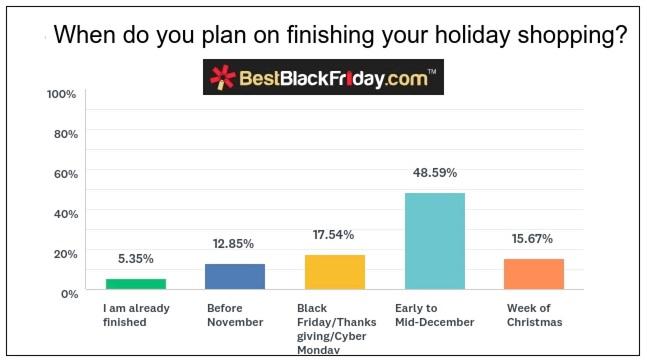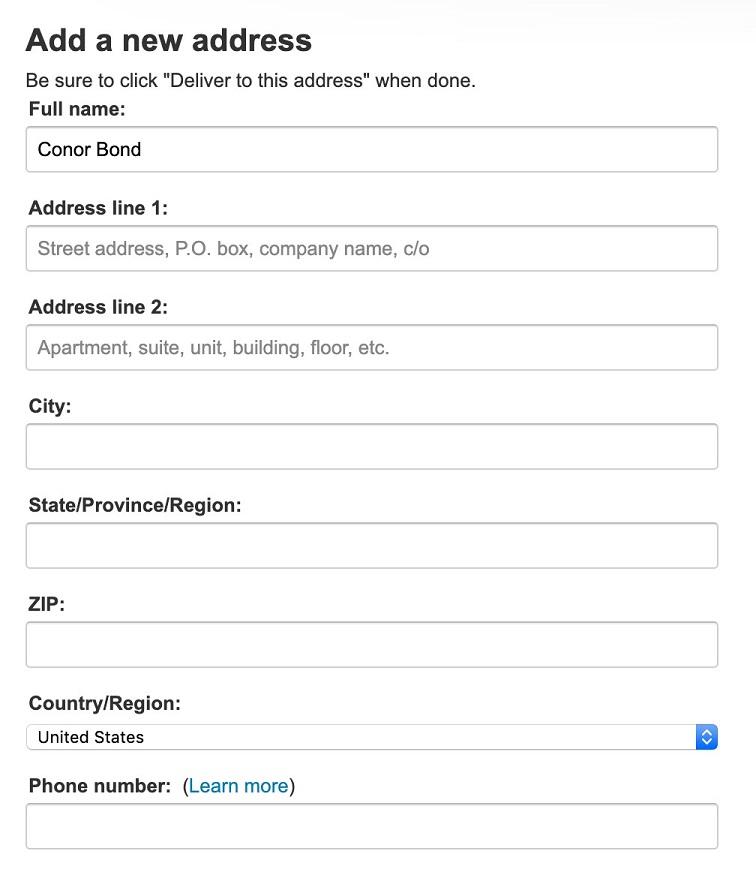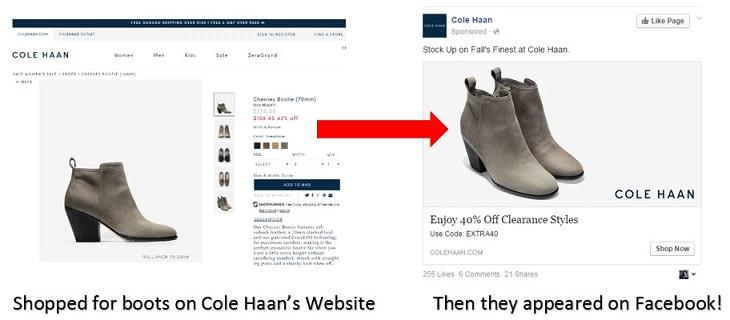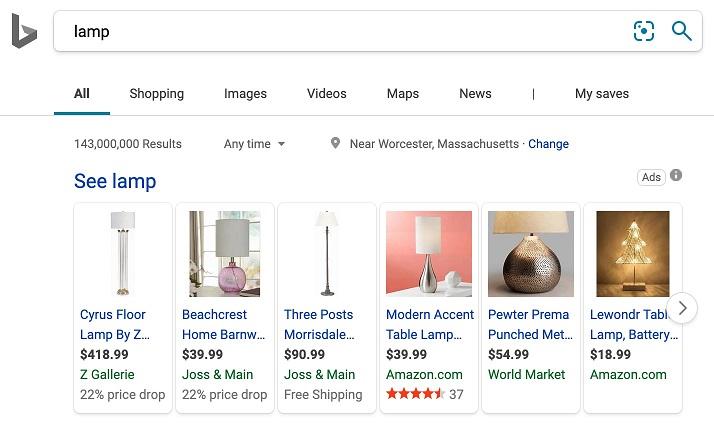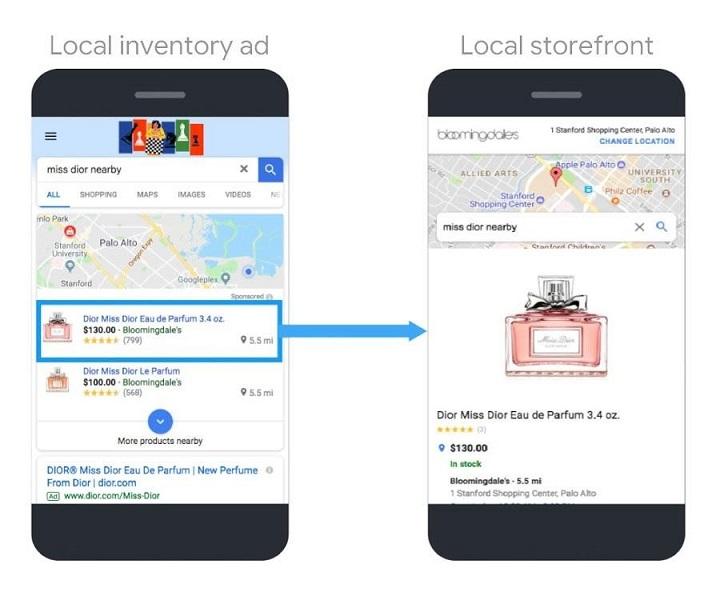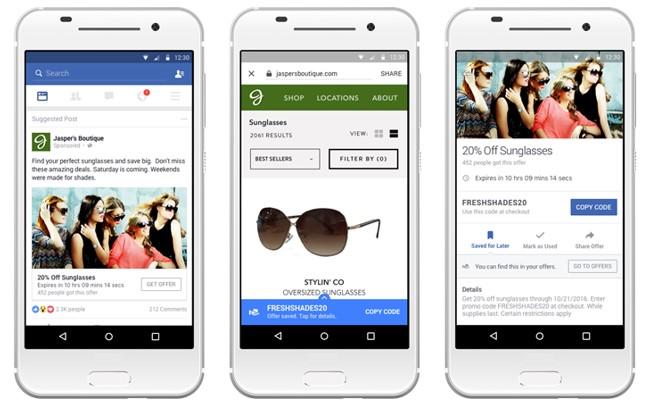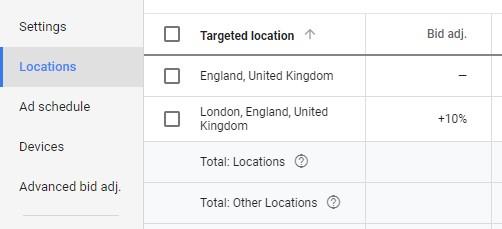Christmas is just days away, my friends. The time for exchanging presents, catching up with loved ones, and marinating ham in eggnog is almost upon us. Needless to say, the temptation to turn on the Hallmark channel and zone out for hours on end is approaching its peak level.
Alas, there’s still work to be done. Unless you sell something that appeals to extraordinarily punctual people, I guarantee that at least some of your prospective customers have yet to check all the boxes on their holiday shopping lists.

In other words: You’ve got plenty of sales to make as the holiday season winds down.
Ever benevolent (good band name), we’ve put together something of a last-minute holiday season survival guide. First, I’ll share five insightful statistics that’ll get your wheels turning. Then, I’ll provide five actionable tips that’ll help you finish the season on a high note.
Let’s do it.
5 key stats for the end of the holiday season
1. 16% of people will finish shopping just before Christmas
Our first stat comes courtesy of Best Black Friday, an online publisher dedicated to all things retail. According to their survey of over 1,000 American adults, roughly 16% of consumers will finish their holiday shopping during the week of Christmas.
I’ll admit it: 16% doesn’t sound particularly impressive—at first. Some quick math, however, will likely change your mind. There are over 250 million adults in the United States. 16% of that figure gives us … 40 million shopping procrastinators.
Evidently, this final stretch of the holiday season provides plenty of sales opportunities for retailers of all kinds. Don’t take your foot off the gas until Santa’s boots are inside a fireplace.
2. Last year brought a 24% increase in shipping discounts
According to eMarketer, the 2018 holiday season brought a 24% YoY increase in discounted shipping offers. It’ll be a few months until this season’s data is finalized and distributed, but we’re all adults here—we can make an educated guess. Though I won’t be so bold to claim that this season’s spike will climb as high as 24%, we can comfortably assume that your competitors are just as eager—if not more eager—to entice last-minute shoppers with discounted shipping.
It’s no secret that online shoppers are fond of discounted (and free) shipping all year long. But when time is running out and your prospects are under the gun to submit their orders, few things are more powerful than inexpensive, flexible shipping. As eMarketer’s data shows, more and more companies are taking note of this trend and adjusting accordingly. If you don’t follow suit, you might not hit the holiday conversion numbers you’re looking for.
3. 35% of shoppers expect you to store their information
I should probably clarify. I’m not saying that 35% of shoppers expect you to store all their information; they simply want you to remember their shipping and billing addresses as they try to submit their orders. This figure comes by way of Google’s Global Retail Study, conducted in February of this year.
There’s nothing complicated to dissect here. As you know from your own shopping experiences, it’s annoying when you want to submit an order to an online store you’ve already used and you’re asked to re-enter your shipping and billing information. A lot of shoppers—including those who are browsing your site as we speak—would prefer to breeze through the order submission process and get back on with their lives. Put differently, they want minimal friction.
Nobody wants to do this charade every time.
If you want to drive a boost in your last-minute holiday sales, make it painless to submit an order to your online store.
4. 49% of shoppers want ads based on purchase history
Yet another valuable insight from Google’s most recent Global Retail Study: Practically half of shoppers say they want personalized ads based on past purchases. I’ll say more on this topic in the next section of the guide, but this is definitely an insight you’ll want to take to heart. Your prospects are telling you something in unambiguous terms: They want the ads they see online to be catered to their preferences.
The final stretch of the holiday season is the perfect time to remind your past customers of how awesome your store is. As the pressure to buy a gift continues to climb, online shoppers become more and more eager to find inspiration. With a well-timed, personalized ad—on Facebook, Instagram, Google, or wherever—you can save the day just in the nick of time.
5. Microsoft product ads drive a 20% increase in CVRs
Before I move on to my five last-minute holiday tips, we’ve got one last statistic to discuss—this one coming from our friends at Microsoft Advertising, formerly known as Bing Ads. According to internal data collected over the past few years, product ads have helped retailers drive a 35% increase in clicks, a 62% increase in conversions, and a 20% increase in conversion rates.
Basically, this ad type from Microsoft can help you grow your site traffic and sell more products. What better time to get on board than the holiday season?
The equivalent of Google Shopping ads, Microsoft product ads are image-based promotions that live at the top of the search results page. Designed to entice users looking to make purchases, a product ad includes a picture, a title, a price, and your brand name. If you’re savvy, a product ad can also include a special offer (e.g., “Get 20% off) that further differentiates you from your competitors. No wonder they’re so effective at getting users to click, huh?
Here’s the bad news: If you’re not already advertising on Google Shopping, it’s unlikely that you’ll be able to get up and running with Microsoft product ads in time for Christmas. You can’t take advantage of this ad type until you’ve created and uploaded a complete product catalog, and that’s a task that requires quite a bit of time.
For those of you who are on Google Shopping, you’re in luck. Within the Microsoft Advertising interface, you can simply import your Google Shopping campaigns and hit the ground running. Microsoft will need to approve your ads, of course, and you’ll have to manually create things like negative keywords and sitelink extensions. But if you work quickly (and, as I said before, make your shipping options flexible), you can get in front of last-minute Bing shoppers as they furiously try to finish their holiday shopping.
Worst case: Your product ads don’t go live quite in time, but you’ve still got an awesome new ad type to take advantage of in the new year.
5 actionable tips for the end of the holiday season
1. Run one-day sales on Super Saturday
As I’m sure some of you already know, the last Saturday before Christmas is known as Super Saturday—one final chance for those 40 million procrastinators to buy gifts for their friends and family members. Estimates vary, but according to ABC News, retailers can expect to generate something in the ballpark of $15 billion in revenue—in just one single day.
It’s not enough, however, to simply open your doors on Saturday, December 21; you need to go the extra mile and give your prospects a reason to pick you over your competitors. For better or worse, that means you need to run some killer one-day sales.
Shoppers will always appreciate discounted prices, but that doesn’t mean you shouldn’t get creative with your Super Saturday strategy. Think about products that complement one another. If you manage a bookstore, for example, maybe you could frame your sale around the different types of books you sell: Buy one mystery novel and get a second one half-off!
2. Use local inventory ads on Google & Bing …
Google shared one heck of a statistic back in 2018: In just two years, the frequency of “near me” mobile search queries grew by over 500%! Clearly, shoppers like to see which stores have certain products in stock before getting in their cars or hopping on the bus. I have to imagine this tendency only gets stronger as the number of days before Christmas dwindles. After all, no one has any time to waste!
To help you turn this trend into some additional revenue, Google created local inventory ads. Here’s how they work. When a prospective shopper searches “women’s perfume near me,” they see a series of local inventory ads—each one providing an image, a price, in-store availability, and (perhaps most importantly) directions. Basically, a local inventory ad is an easy way to let your prospects know that you have the exact thing they’re looking for!
As with Microsoft product ads, you have absolutely no time to waste. Once you’ve submitted your local inventory feed, Google needs a few days to review and verify everything. To speed up the process—which, again, is a must at this point—consider limiting your inventory feed (for now) to just a handful of popular products. This will allow you to quickly create your feed and get it approved as fast as possible. Even if your local inventory ads don’t go live until a day or two before Christmas, that’s alright—people will be shopping! Plus, those ads will still be valuable even after the holiday season has ended.
Speaking of Microsoft: They offer local inventory ads, too!
3. … and offer ads on Facebook!
Whether you’re advertising a physical store or an online brand, there’s so much to love about Facebook offer ads—a mobile-only ad type that allows you to entice prospective customers with irresistible deals. Users who claim an online offer will receive a discount code and subsequently get sent to your website to shop. If you’re targeting in-store shoppers, they’ll receive a barcode (or QR code) that they can present while checking out.
For those who are interested, here’s a step-by-step guide to creating Facebook offer ads. Once you’re ready to make one of your own, here’s my advice: Determine who you’re going to target before writing your ad copy. That way, you’ll be able to make your messaging as personalized and engaging as possible. When you’re competing with other retailers to win over last-minute holiday shoppers, every little thing counts. If you can make your procrastinator prospects feel as if you’ve created a special offer just for them, you should see some great results.
4. Take advantage of location bid adjustments
Word to the wise: You can set your keyword bids to automatically change (either increase or decrease) according to the physical location of whoever’s triggering your search ads. If you’re advertising a brick-and-mortar business—whether it’s a clothing store, a restaurant, a hair salon, or whatever—location bid adjustments are a fantastic way to increase brand awareness, site traffic, and overall sales.
Via Emarketeers.
The final stretch of the holiday season provides the perfect opportunity to combine the power of location bid adjustments with hyper-specific ad copy. For example, let’s say you’re marketing a local Italian restaurant. If someone in your area searches “restaurant gift card,” a location bid adjustment can help you win the top ad position and prominently showcase your winning copy: “Give the Gift of Italy│Gift Cards Now Available.”
P.S. With the bid simulator (found under the Keywords tab in the Google Ads interface), you can get a sense of how changes to your bids will impact your results.
5. Remarket to past customers
Stat #4: 49% of shoppers want ads based on their purchase history. If someone asked me to make the case for personalized remarketing with a single statistic, if might be that one. What else do you need to hear? People want to see relevant ads across search and social.
I’m repeating myself, but this warrants emphasis: When the holiday season is winding down and the competition between you and your rivals is peaking, the power of personalized messaging cannot be overstated. And although platforms like Google and Facebook allow you to segment cold audiences by demographics and interests, there’s no group of people you know better than your own customers. That’s why you should make them your focus as Christmas draws closer!
Knowing the specific products your past customers have purchased is an incredible asset. Let’s say, for example, that you’ve kept an (anonymized) record of all the Facebook users who converted on an ad for a pair of running sneakers. Instead of going after a batch of entirely new prospects, why not retarget those customers with a carousel ad that showcases all your other running-related products? Although this approach means reaching far fewer people, you can take comfort in the fact that they’re much more likely to click and convert. If you’re under the gun to hit specific holiday season targets, it makes sense to go after high-quality prospects!
Social isn’t the only place to get your remarketing on, however. With remarketing lists for search ads (RLSA), you can increase your bids on specific keywords when they’re triggered by users who’ve visited particular pages on your website. Let’s stick with the example of running gear. If you have an (anonymized) list of everyone who’s visited the page on your site dedicated to a specific pair of sneakers, you can increase your bid on the keyword “running gear” whenever it’s searched by one of those people.
At this crucial time of year, high-quality prospects are the name of the game.
Read more:
